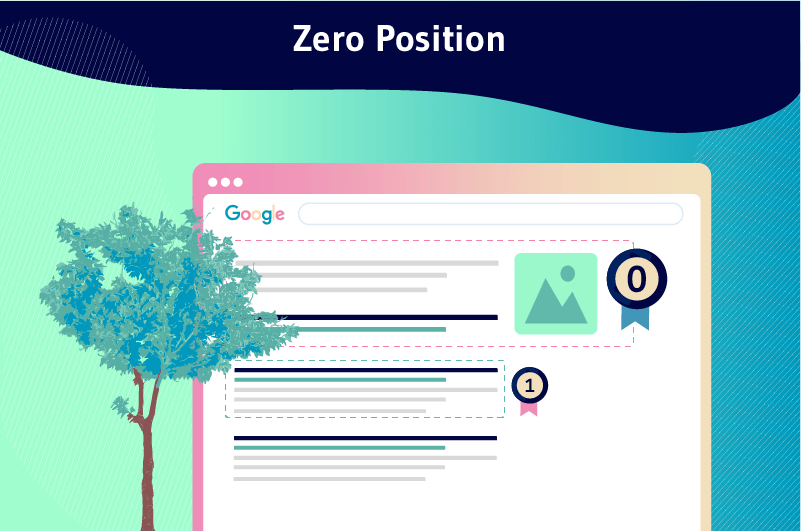In SEO, the term Zero Position refers to Google’s answer element, ranked before even the first organic result, except for Adwords ads. The idea of the search engine is to serve information that directly and clearly answers the question of the Internet user without the need to click on a link in the search results
The content of the Zero Position can take several forms: a Knowledge Graph, a Onebox result, Featured Snippets, Google Maps points of interest, a Google universal search
You may think that the best you can do is to help your site to occupy the first position in Google organic results!
But as you have just seen, there is a Zero Position that is even better than the first place on the search engine pages
This is a position that is highly prized by web SEOs because of all the benefits it is full of
So:
- When did Google adopt this form of presentation in its search results?
- What is its importance in SEO ?
- And what are the conditions to meet to hope to appear at this famous Zero Position?
We talk about it in this post 100% dedicated to this topic!
Chapter 1: Zero Position – Definition and Origin
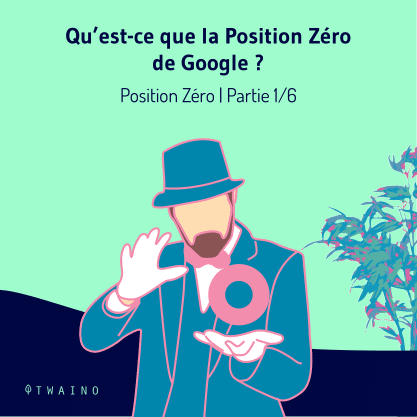
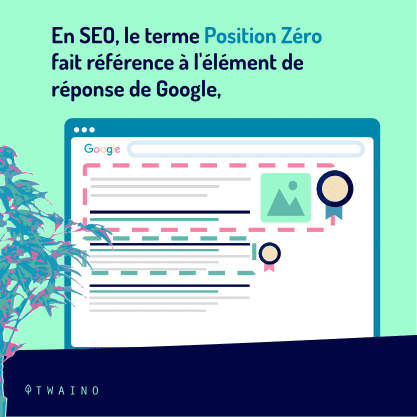




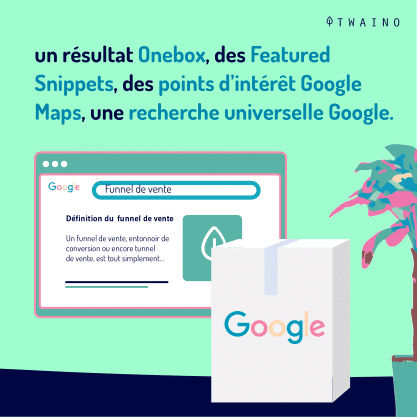

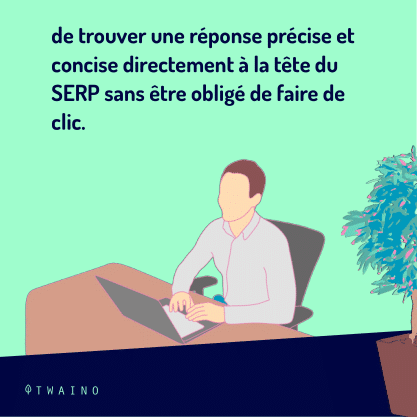

In this first chapter, we will recall the definition of the Zero Position and especially understand the origin of this form of display of search results
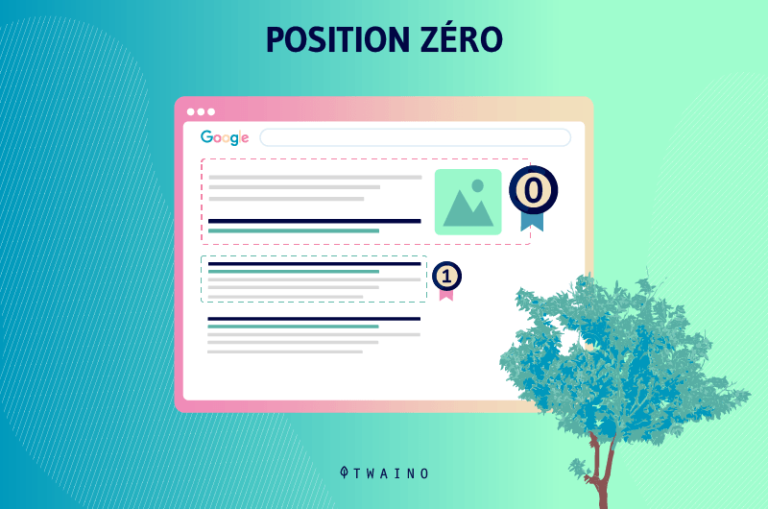
1.1. Definition
The Zero Position is a term used in the jargon of SEO to designate the search result ranked above all results.
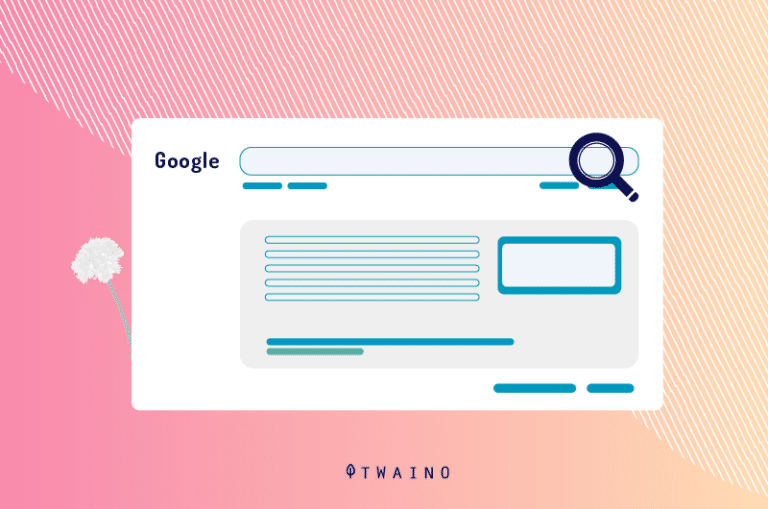
But it is important to remember that if the page contains Adwords links or advertisements, the content of the Zero Position comes after these sponsored ads
So, how do you recognize a result that is ranked as 0? Well, generally, this position is materialized by an isolated block at the top of the page whose content answers in a precise and concise way the question asked by the user
To give a concrete example of a result at Position Zero, let’s formulate a request to Google. For example, we could ask it to define the term “Guest article”
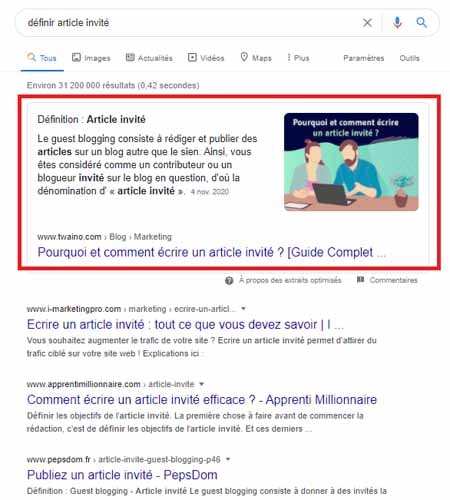
As you can see, my article on the subject stands out from the crowd and ends up at Position Zero when a user launches a definition-type query on the term “Guest article”
It must be said that all the types of queries that bring up results at Position Zero are mostly in conversational form
A bit like the questions asked in a voice search which Google tries to answer quickly and as clearly as possible
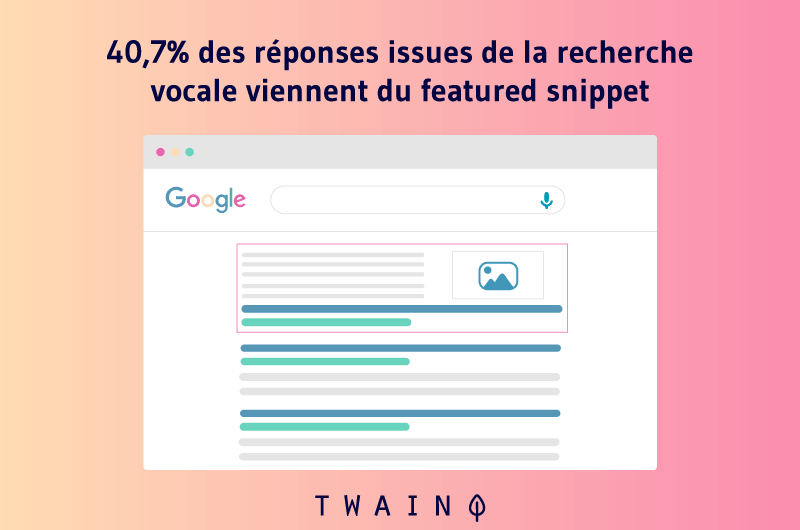
Since Google is constantly looking for ways to provide a better experience for its users, it’s safe to say that the online search giant is putting a little more focus on Zero Position content than ads and even natural results.
This represents a real challenge for websites that all covet this place ranked even above the top of organic searches
But concretely, where did Google get the idea to reserve such a place on its SERPs to answer its users?
1.2. The short history of the “Zero Position
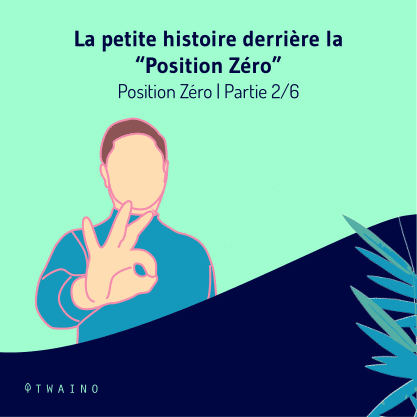




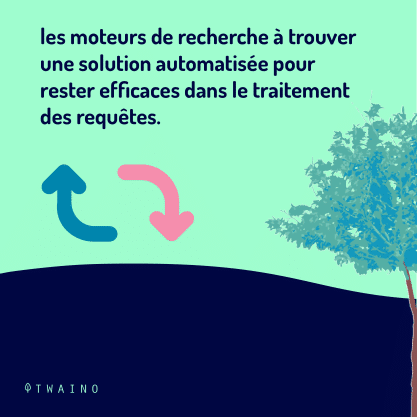




In the beginning, most of the search engines processed the queries of the Internet users manually. That is to say, it was humans who decided which types of content should be listed to answer a given question
This was back in the 90’s when the demand for information on the Web was only solicited by a handful of Internet users. Those days are long gone now
Then gradually, this demand for online research literally exploded, forcing search engines to find an automated solution to remain efficient in processing requests
The best solution would be to program an algorithm capable of automatically sorting the information contained in the search engine index and displaying the most relevant to the user
After a while, Google had the idea to initiate the Knowledge Graphthe Knowledge Graph is a human-led search engine indexing system that allows search engines to display the most relevant information in their indexes.
It is an insert in the search results that usually appears to answer encyclopedic type questions such as
- The age of a person
- The name of a company or a place;
- Etc
The answers returned for the query “what is the date of birth of Steve Jobs” for example contained a Knowledge Graph as in the picture below
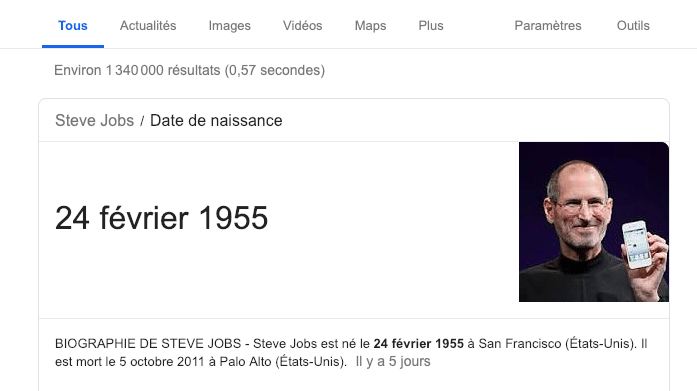
To provide such Knowledge Graph, Google was inspired by Freebase and Wikidata databases
But very quickly Google workers found themselves limited with this “human” way of organizing the Knowledge Graph simply because they could not hold all the knowledge in the world
So the company decided to turn to an algorithmic solution and initiated for the first time the Featured Snippet
To offer these Featured Snippets, Google scans the billions of pages in its index to instantly process the requests of its users.
For example, the query “how to fill out a check” returns a SERP that presents a Featured Snippet extracted from the content of the site Moneylo :
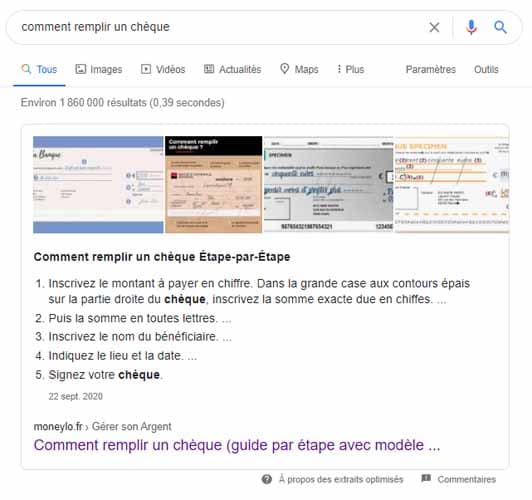
It seems very easy to summarize all this in this way. But the fact is that the American giant had to set up some kind of intelligence so that all this mass of pages could be browsed in such a short time
And to extract a passage that makes sense and that really answers the question of the Internet user in real time
This was a really ingenious idea and is still probably one of the greatest achievements of the search engine
This is where Featured Snippets, Knowledge and all other forms of 0-ranked response elements started
But in concrete terms, how does Google manage to organize all this information to offer such relevant content at Position Zero?
1.3. What is the basis for Google to rank a site at position zero and what is the displayed result composed of?
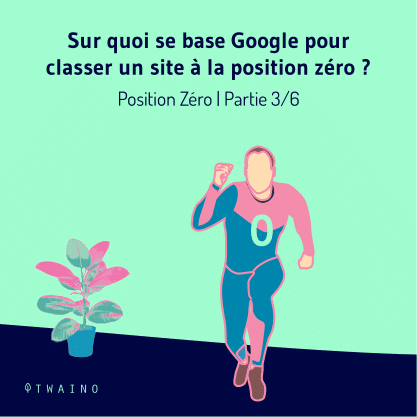

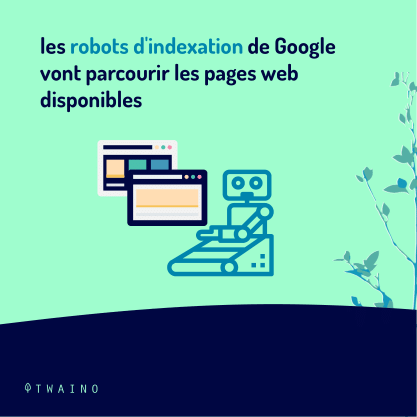
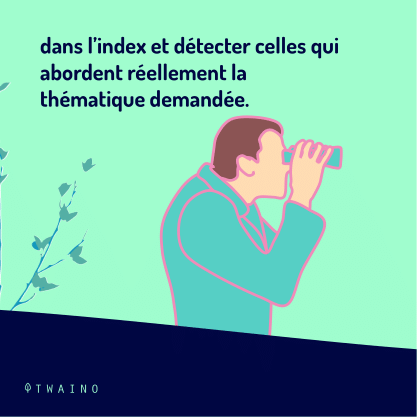


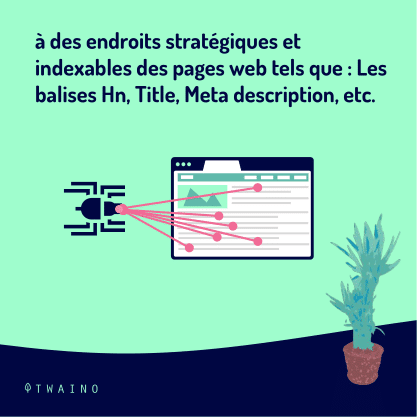



When you launch an online search, the indexing robots of Google will scan the web pages available in the index and detect those that really address the requested topic
This ability to recognize relevant pages is explained by the fact that the same keywords you used to formulate your search are found in strategic and indexable places of the web pages such as :
- Hn tags ;
- Title
- Meta description ;
- Etc.
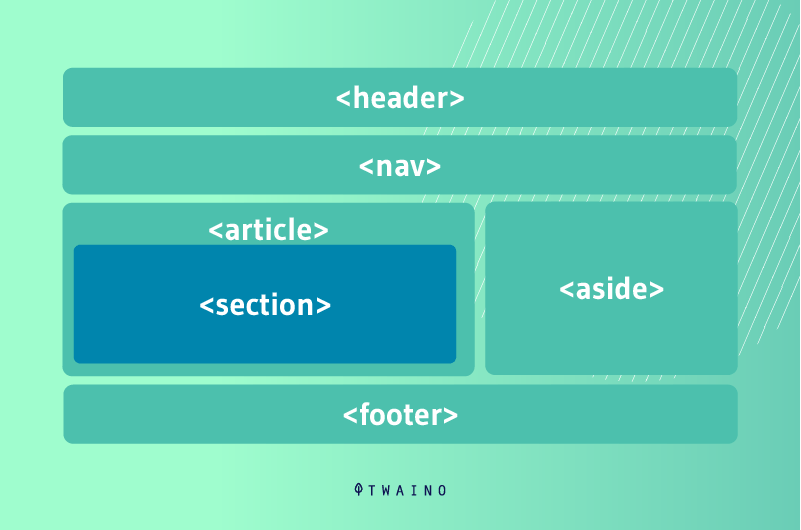
Thanks to very selective criteria, which we will come back to in the next chapter, the search engine will sort through these pages that deal with your research topic. Finally, it will choose only one page, the one that presents the best result
A part of its content, preferably the one that clearly and succinctly answers the question asked, will then be extracted and presented as a result at Position Zero
This extract will be completed by
- The URL of the selected page
- Its title
- And if possible a relevant visual (this visual may well come from another page).
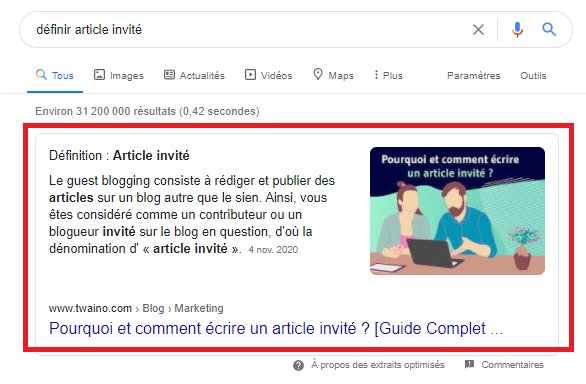
Now you have a pretty clear idea of what Zero Position is. But in concrete terms, what does it bring you in terms of advantages on your site?
Chapter 3: The advantages of occupying the Zero Position on a SERP


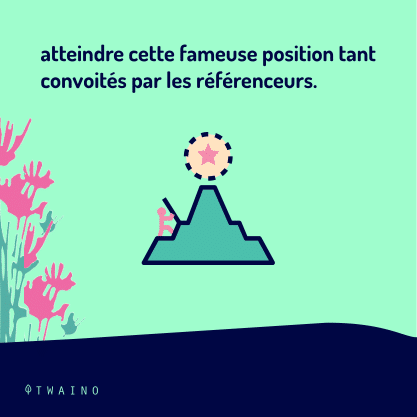
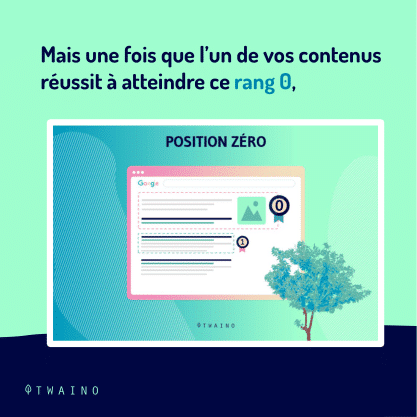


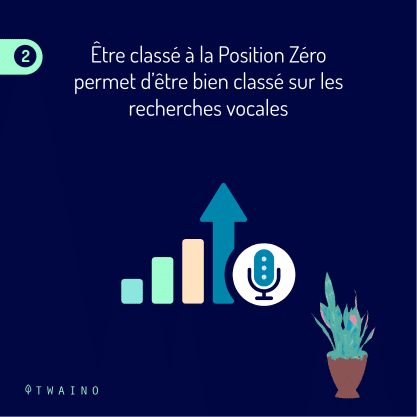
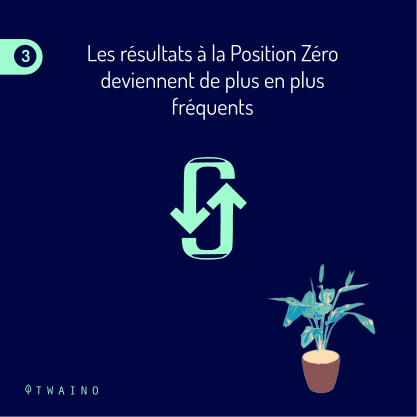
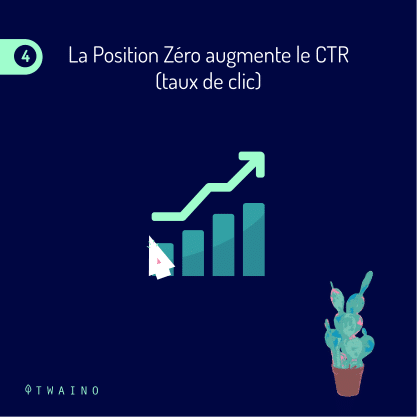

When you target a keyword and you occupy a good position for this keyword, you will gain clicks, customers and obviously income
Today, Internet users have acquired this reflex to consult the Internet almost every time they are looking for information, a product or a service. Google alone receives an average of 63,000 requests per second.
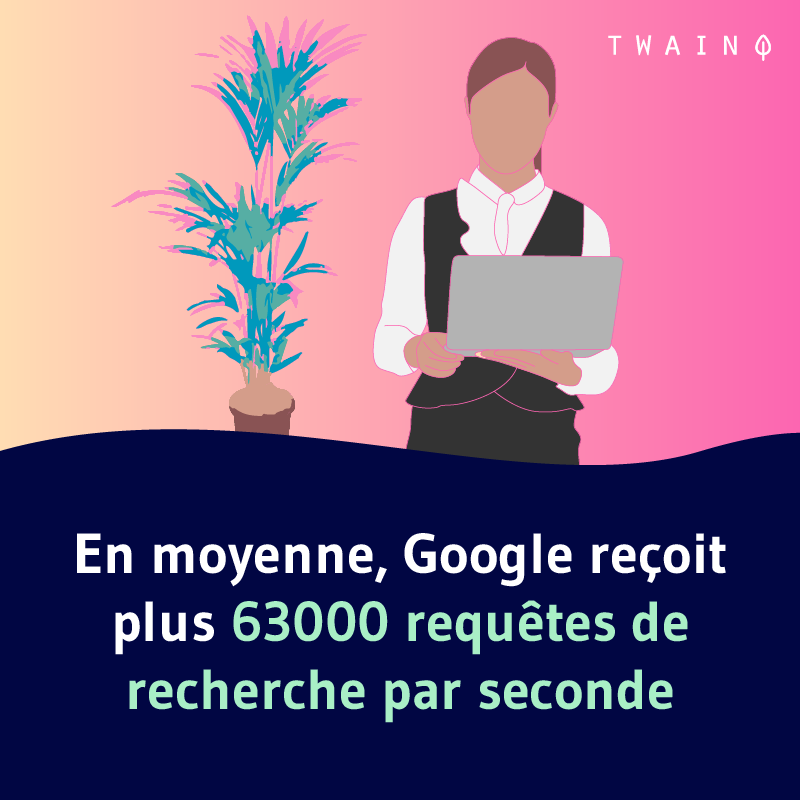
With this astronomical number of searches, one could almost end up believing that position 1 on the search results pages is no longer enough to generate traffic to one’s website
And that you have to go further by aiming for the Zero Position to stay in the race
3.1. The Zero Position allows you to get more places on the SERPs
The first advantage that you have probably already noticed is that the Zero Position makes you gain more places on the SERPs
First of all, thanks to its somewhat isolated location, the page chosen to serve as the Zero Position result stands out from the other pages that make up the organic results list
In addition, notice that this same page may well end up a second time in the top 10 organic results
Let’s take the example of the query “how to make your own Bacon” which gives the result on the capture below
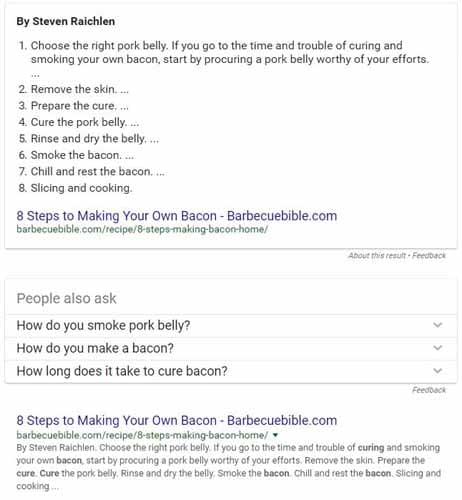
As you can see, for this search, the same page from Barbecuebible.com occupies Rank Zero and also ends up in Position 1
So occupying the Zero Position for a given query can also mean occupying two positions on the first Google page
If you manage to get two tickets on this coveted first page of Google, we can say without pretense that it is a privilege and more likely to attract traffic
Imagine that for some reason, a web user who wants to know more about the recipe for preparing Bacon ignores the Featured Snippet
Well, there is still a probability that he will find the same link at position 1 of the organic results. And there, he will probably be convinced that it is relevant content and will click on the link
3.2. Ranking at Position Zero allows you to rank well on voice searches
Nowadays, the voice search is expanding rapidly. According to an estimate by OC&C Strategy Consultantssales through voice search are expected to reach $40 billion by 2022
It’s a growing branch of online search, so you might as well get in on it now before the competition gets too tough
And optimizing your content to appear at Rank 0 would be a great way to start since these are the same Zero Position results that Google serves to voice queries
Statistically, more than 40% of the answers obtained by voice search are drawn from Featured Snippets

Appearing in the Zero Position will make you gain a good ranking for classic searches, but also for voice searches
3.3. Results in the Zero Position are becoming more and more frequent
According to a study conducted by Search Engine Journal, more than 12% of search results so if you are already in first place for a given search, you should not rest on your laurels
A competitor can still occupy the Zero Position on that search and outrank you at any time
In addition to your current position on the SERPs, it is therefore also important tooptimize your content given the percentage of Featured Snippets, this would be an opportunity to widen the gap between you and your competitors
3.4. The Zero Position increases the CTR (click-through rate)
You may not know it, but the first few results on a search page get more clicks than the rest of the results. Statistics have shown that the first 3 results receive 75.1% of all the clicks that a SERP can receive
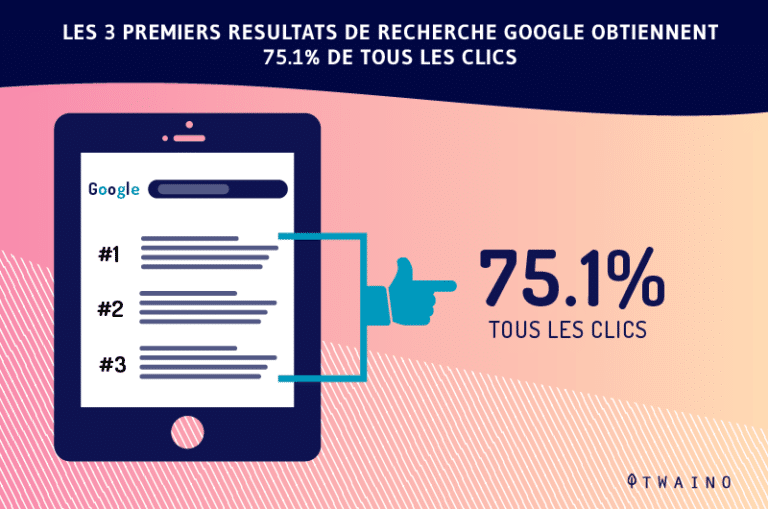
The fact is that the majority of Internet users are in a hurry and trust the first results that Google offers
With a little hindsight, you will surely realize that you yourself rarely visit the last results of the Google SERP 1, even worse if they are on the 2nd or 3rd page
The advantage of pages ranked on the Zero Position is that they are even better placed than the first results of the SERP 1. And therefore, they will generate more traffic than the pages ranked below them
However, there is a fear that bothers many site owners. Indeed, for many people, if a page is ranked at Position Zero and at the same time reveals all the answers the user needs, wouldn’t this reduce its click rate?
A rather logical fear, admittedly. But, strange as it may be, research has shown the opposite
Authors whose content was used by Google to serve as a Zero Position result have confided that they noticed an increase in their click-through rate
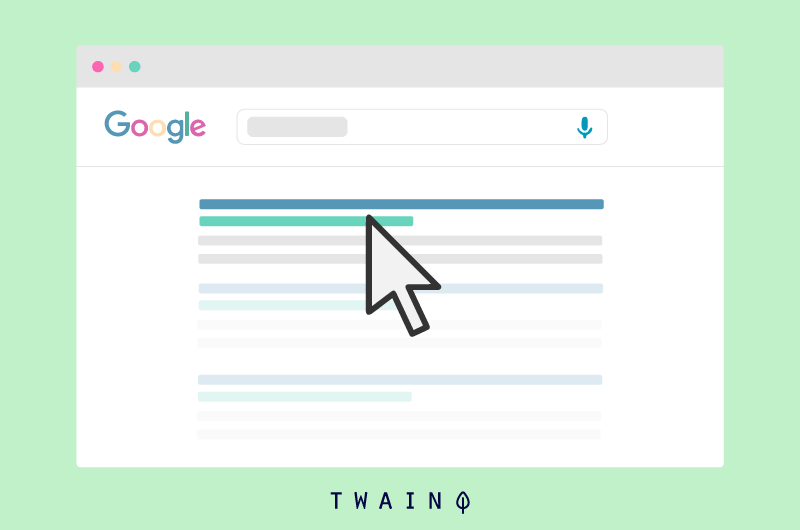
In 2015, Glenn Gabe conducted a survey tracking traffic to one of his client’s sites that lost Zero Position for a keyword for which it was ranked as a Featured Snippet. Two weeks after this downgrade, the client lost over 39,000 clicks
Additionally, in 2016, marketing platform HubSpot published research conducted on keywords with high search volume
This study revealed that sites that occupy the Zero Position on a SERP could see up to 114% increase on their click-through rate. The percentage remains roughly the same when the same site already occupies the first place in organic searches
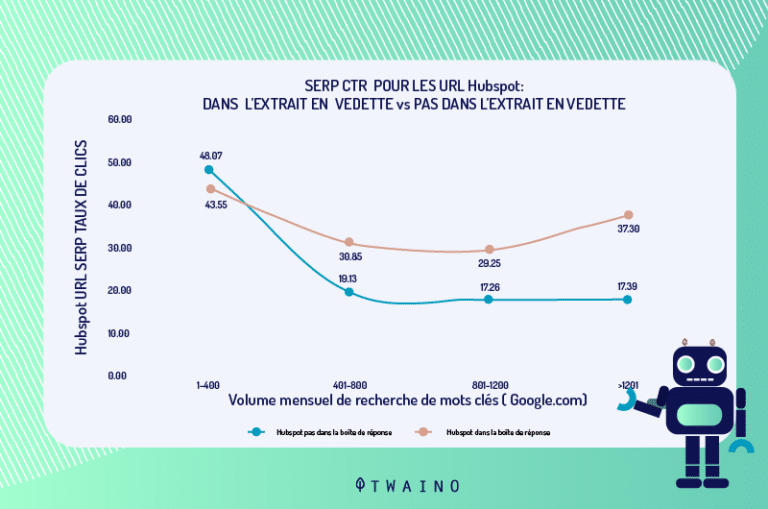
Search Engine Land also conducted another research that revealed that sites chosen as Featured Snippets saw their number of user sessions increase by 516% from computers and 505% from cell phones
All of this research leads to one obvious conclusion: Zero Position is of great SEO importance and positively impacts the click-through rate of a site
With all the advantages of the Zero Position, it is easy to understand why this position is so popular in the SEO world
But if you too want to get into the race for this Holy Grail, what are the steps you need to take?
Chapter 4: How to rank at Position Zero?


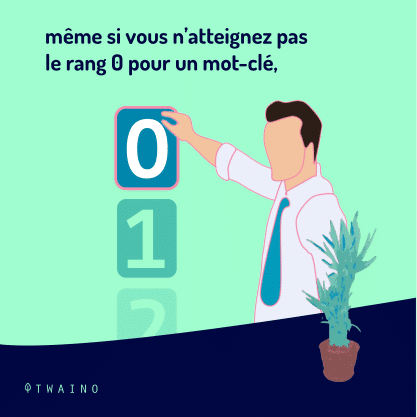



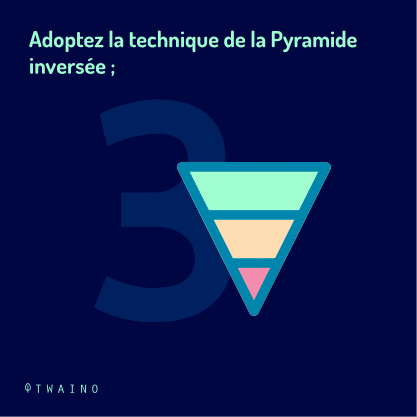



At the outset, I would like to draw your attention to two essential points. First, you should know that getting posted to Position Zero is no small feat. But that’s no reason not to try
After all, even if you don’t reach Rank 0 for a keyword, youroptimization efforts will still improve your overall ranking on Google SERPs
Secondly, be aware that you don’t have to be Number 1 in a SERP before you can gain the Zero Position
Even if for our example on the query “how to make your own Bacon”, the same page ended up at positions 1 and 0, it is not every time that this happens
The beautiful proof, for the query “definition of guest article”, my page is ranked at 0 without necessarily being 1st in the organic results
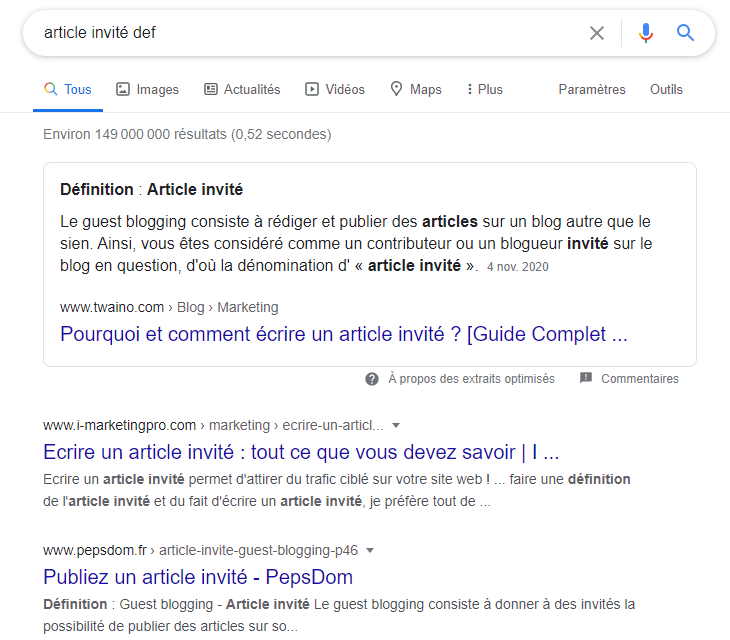
In fact, only one third of Featured Snippets are drawn from a result in first position. Mostly, it is the results between positions 2 to 5 that have the best rates of appearance in Position Zero
Everything leads us to believe that Google is much more concerned about the relevance of a page than its ranking to choose it at rank 0
So, if one of your pages is ranked at the 5th place on a SERP and it is still more relevant than another page ranked at the 2nd position, it is quite possible that your page is chosen in Position Zero
But concretely, what are the practices to observe so that your content is more consistent than those of your competitors in order to hope to win the Zero Position?
Here are five (05) tips to consider:
4.1. Avoid words and get straight to the point
The first aspect of making your content relevant is to get straight to the point. Avoid sentences that are too long with endless twists or innuendos
Just use concise sentences that are understandable enough to facilitateindexing google’s algorithms
If you use the WordPress CMSthere is an extension that can help you in this process, it is Yoast SEO with its flesch readability score

As soon as a content is saved on your site, the tool assigns it a readability score that varies between 0 and 100. The closer the score is to 100, the easier it is to read the content
With a score of 90, the level of understanding of the content can be compared to that of an 11 year old student. Between 60 and 70, the content can be easily understood by a 15 year old student at the most
Personally, I would not recommend going below this score range. It is estimated that with a comprehension level of a young middle schooler, Google will be able to easily understand the content.
4.2. Prefer an ordered list for your listings
According to The Next Webordered lists represent 41.6% of the content used as Featured Snippets for online searches
If you haven’t used them before, now is the time to get into the habit of creating lists for your content. This is a style that is very popular with Internet users because of its practicality
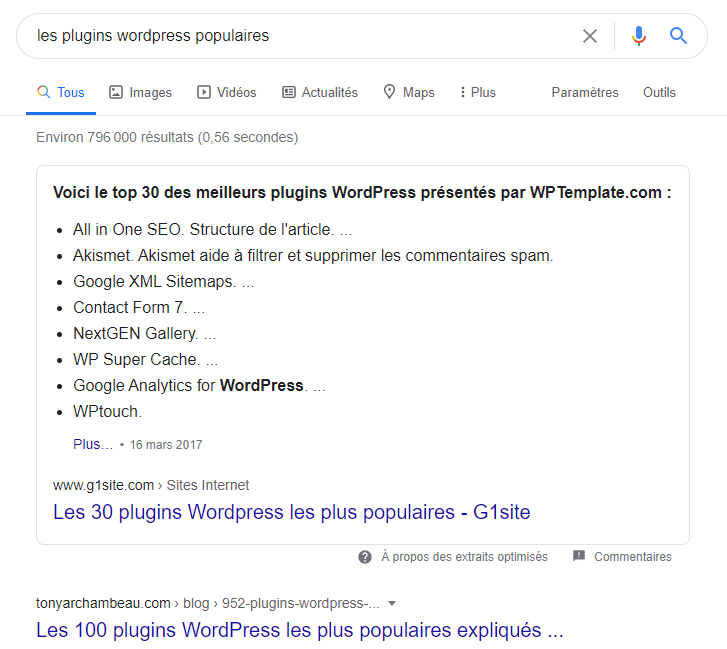
The information is delivered directly and clearly, ideal for a Featured Snippet. For example, you can answer frequently asked questions about your brand in the form of a listicle
On the one hand the content will be easily analyzed by search engines and on the other hand it will be easier for your users to read. This increases your chances of appearing in the Zero Position
4.3. Adopt the Inverted Pyramid technique
The Inverted Pyramid technique can also help you get relevance in your content
It is an editorial technique that advocates that you start from the most important information and gradually go down to the least important, a bit like actually inverting a pyramid
Technically, this means that at the top of the content, you propose a summary and then you approach the details gradually until you get deeper into the subject
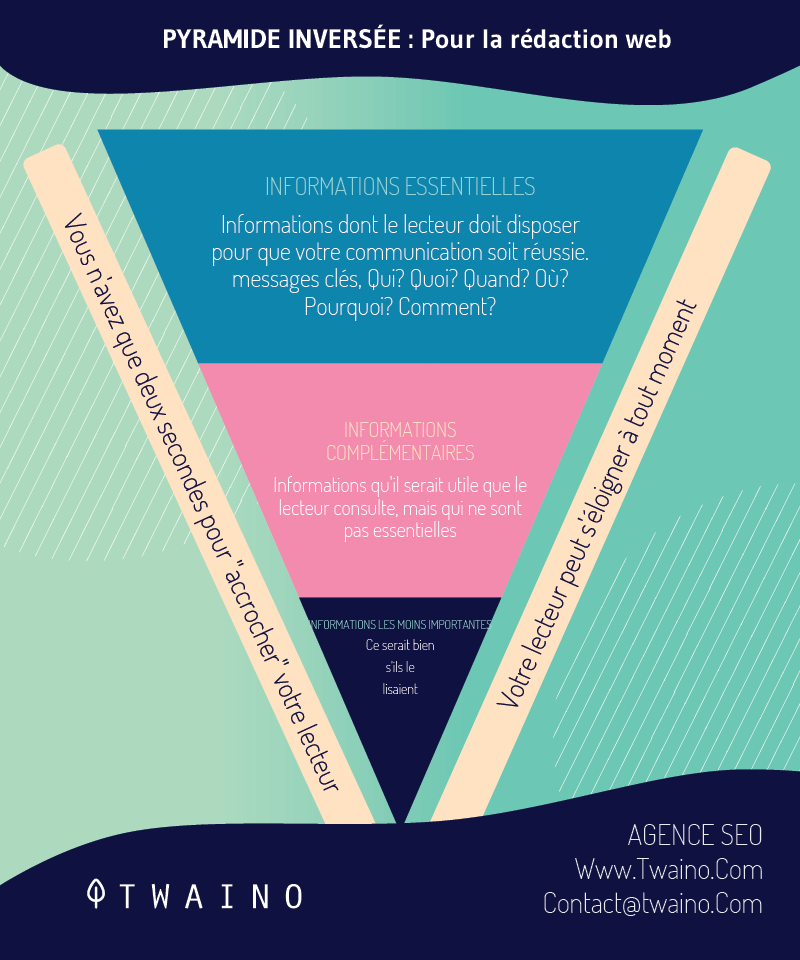
This is a technique that is widely used by journalists because of its usefulness to viewers. In today’s context, the inverted pyramid technique would make it much easier for your readership to understand
The reader quickly accesses the important information of the article and will be able to decide whether to continue reading for more clarification, exactly like what Google searches for as an excerpt at Position Zero
4.4. Use relatively long content
Another way to prove to Google that your content is relevant and that it can be extracted to serve as a result at Position Zero is to write large content. Well, not necessarily too long, a 1,500 word article should do the job
It is already proven that long content has important advantages SEO benefits for a site.
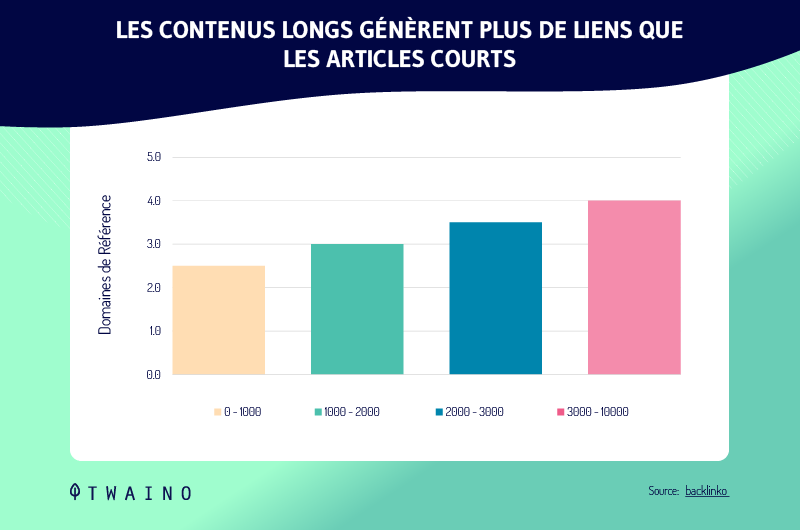
In addition to these benefits, a large content can also allow you to gain the Zero Position on a keyword
On the graph below, we can clearly see that there is a correlation between the number of words that a page contains and its position on a SERP:
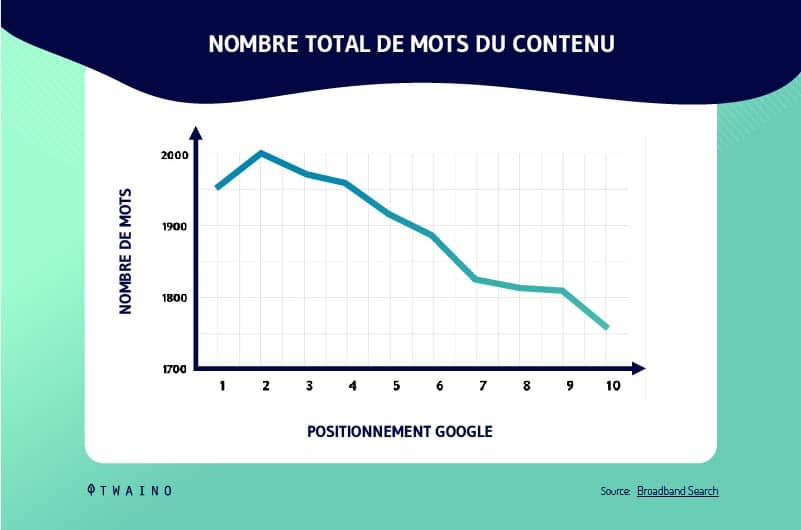
Also, notice that the longer a content is, the better you will develop it. Take care to collect important information on the topic and produce content that is really useful for the reader
Google will deduce that you are an authority in your industry. This increases your chances of being displayed at Position Zero
4.5. Don’t forget keyword research
If you have been in SEO for a while, you probably already know this SEO technique, the keyword research
With tools like SEMRush, Ahrefs and many others, you can set up a keyword research keyword research strategy strategy
The goal of such a strategy is to find the relevant keywords for your activities, but also less competitive to quickly refer you
To do this, write content in which you will be able to target these keywords with low search volume
By targeting them, you will be able to gain the Zero Position much faster than you think due to the fact that there are less competitors on these keywords
Now you know the best practices to follow to optimize your content for Rank 0
But do you know what types of content to apply these practices to in order to maximize your chances?
Chapter 5: 7 Types of Content that Dominate the Zero Position
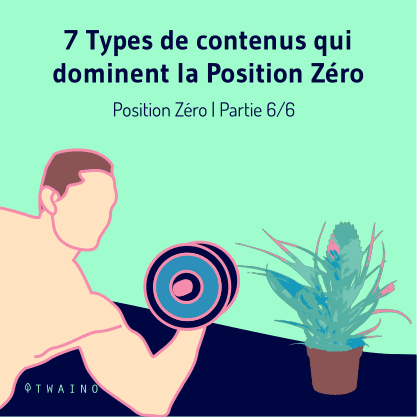
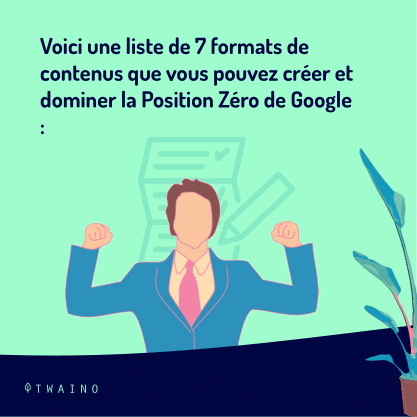
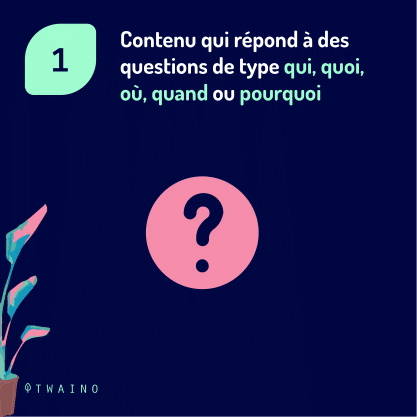

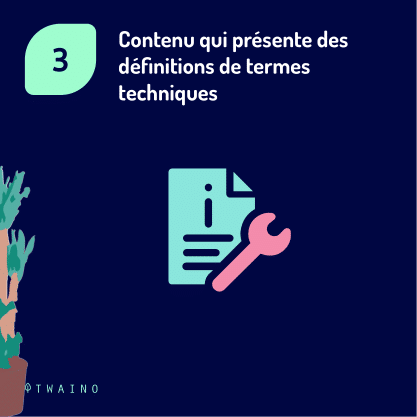
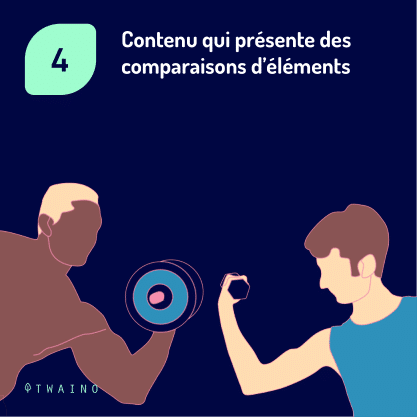


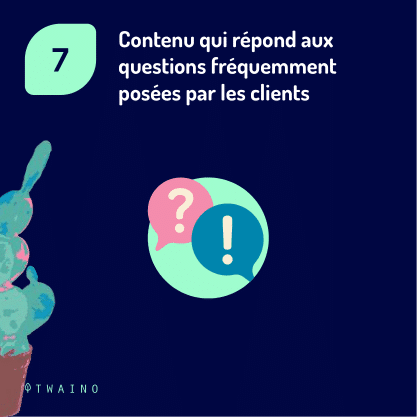

Here’s a list of 7 content formats that are the most extracted that you can create and dominate Google’s Zero Position:
5.1. Content that answers who, what, where, when or why questions
The most common content found in Rank 0 are articles that answer questions, especially questions like
- Who
- What
- When
- Where
- Why.
But it is important to underline that the complexity of the question counts a lot and influences Google’s choice. It is therefore not a question of simply answering any question of the type “when” for example to reach the Zero Position.
What is recommended is to formulate questions with an intermediate level of difficulty, i.e. the right balance between a question that is too easy and too difficult
If the question is in the public domain, Google will decide to use its own database to propose an answer more appropriate to the Zero Position
Example: How long is the Great Wall of China?
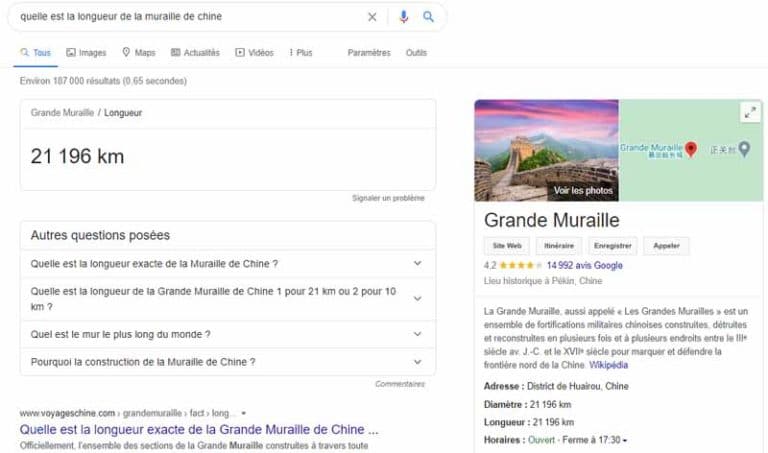
At the same time, if the question is too complex, Google may simply decide not to propose a result at rank 0 and go directly to the organic results
And if the question is of a medium level of complexity, Google can take a site from its index and display it at Position Zero in the form of a Featured Snippet.
Example: What is the origin of the Great Wall of China?
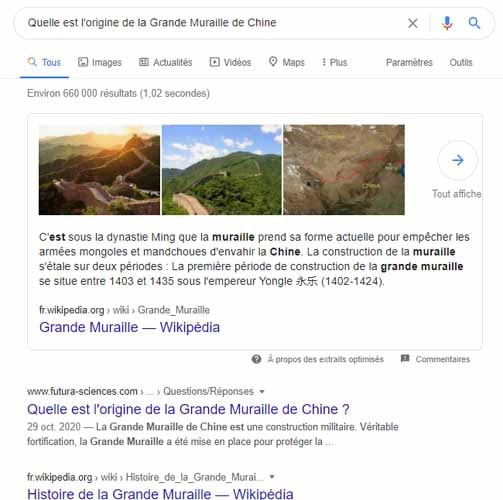
Regardless of your industry, there are always questions like which, where, what, when or why that you can formulate and answer clearly in an article
If you’re short on ideas, use Google’s autocomplete or the “Related Searches” and “Other Questions Asked” sections
You’ll find frequently asked questions to inspire you
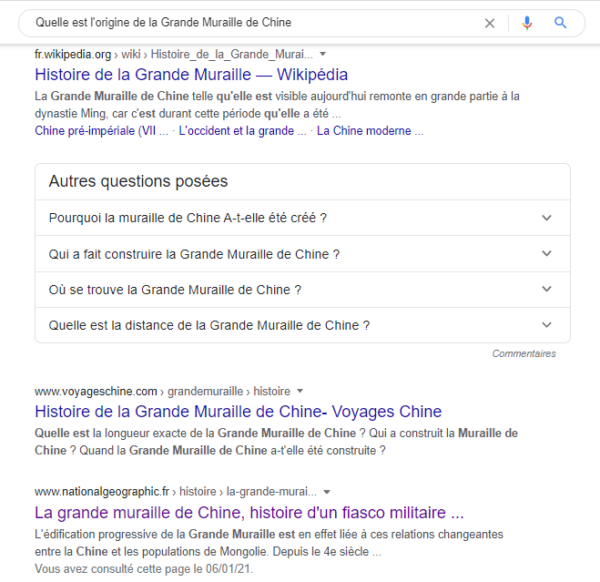
5.2. Content that outlines the steps involved in completing a process
Articles that describe a recipe, instruction, or detail a practical question get the lion’s share of the 12% of searches that contain results at Position Zero
This domination is due to the fact that users are more inclined to content that allows them to learn something new, such as educational content
The other advantage with this content is that it often contains tutorials that make it easier to understand
Depending on the issue, you can add bulleted lists, images or videos to your content to explain the topic to users.
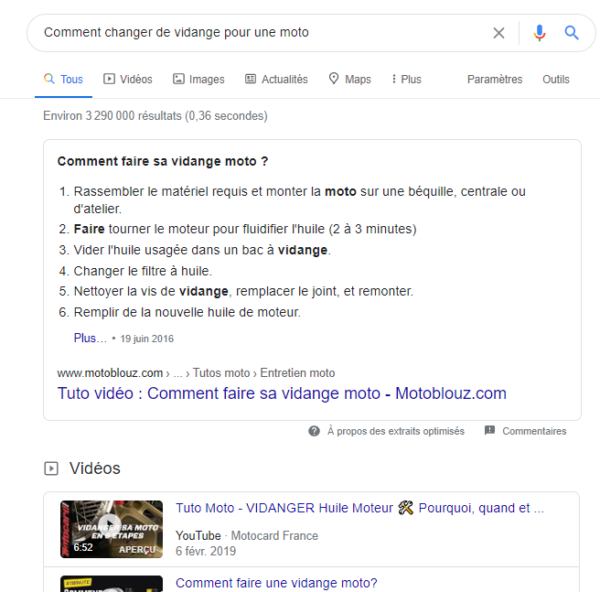
5.3. Content that provides definitions of technical terms
Another type of content that is often found in Position Zero is content that provides definitions of technical terms
Here, the questions that users formulate are simple words or very short sentences, unlike voice searches which are characterized by long sentences
To search for the definition of a term, the user does not necessarily formulate a complete question. If the user simply types in “SEO” or “SEO definition”, it is understandable that they are looking for “What is SEO”
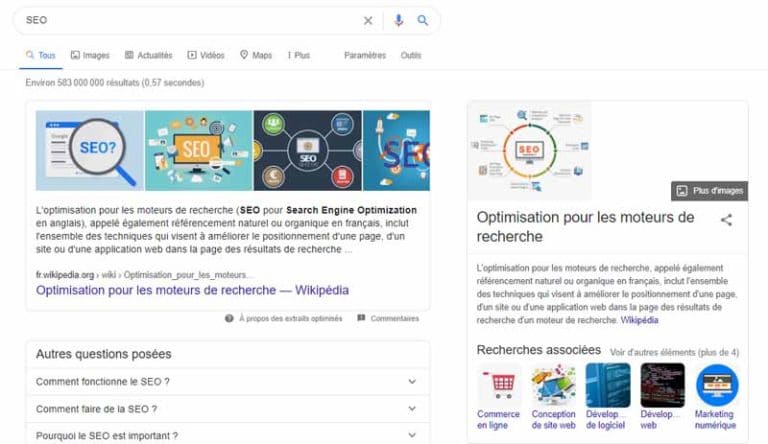
Depending on your field, you can select a list of technical terms and make a dictionary of them. This will be an opportunity to target several keywords for the Zero Position
To increase your chances of being selected, bid your definitions as high as possible with as much relevant information as possible
For the term “SEO” you can accompany the definition with a mini-guide where you will present for example
- The benefits of SEO
- The good practices in SEO
- The prohibited practices in SEO
- And the essential tools in SEO
A bit like this article you are currently reading. Basically, it is a definition of the term “Zero Position”, but I found it useful to complete other chapters to deepen the subject
As you may have understood, make your definition as complete as possible and detail each concept discussed to make the understanding of the definition accessible to everyone
This personal effort you add can be a huge asset to stand out and win the Zero Position
5.4. Content that presents comparisons of elements
There are types of content that allow you to see the difference between several elements by contrast such as
- Tables
- Lists
- And even textual content.
For tables in Zero Position, the formatting to be used is a little different, but is still easy to set up
It is the tag
When displaying your table at Position Zero, Google will take care of presenting a simplified version as Featured Snippets
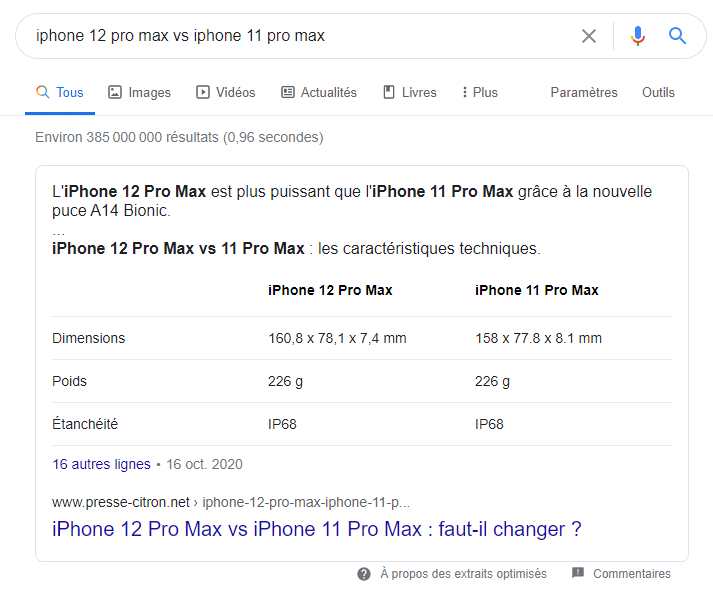
As for the ideas to develop, there are several topics that can be compared. It can be
- Advantages and disadvantages of tools
- Differences between species of animals
- Differences in functionality between devices
- Differences in the functionality of appliances; Comparison of food varieties
- Etc
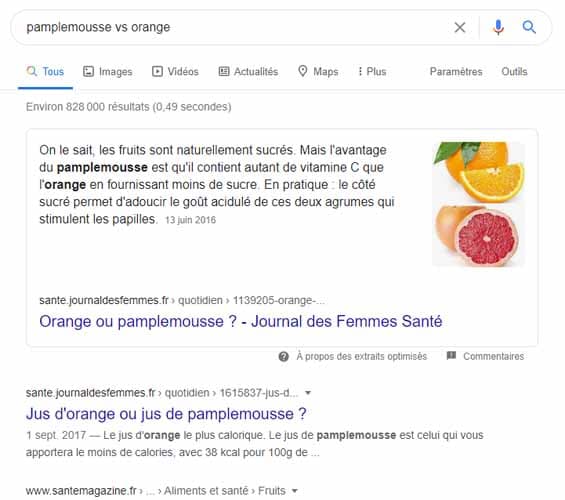
5.5. Content that offers price or cost breakdowns
Users love these types of content, and so does Google. This explains their success among the results in Position Zero
The fact is that price breakdowns allow the user to quickly compare the cost of your products (or services) with those of your competitors
In just a few seconds, they will be able to tell which of you offers an affordable price. However, don’t worry if you don’t offer the cheapest solution
This is not really a problem since many consumers already know that sometimes good quality comes with a high cost
Just be sure to include in the table the important benefits you offer that might justify the price
You can also present a price comparison between the same two services, but available in several packages or products in several models
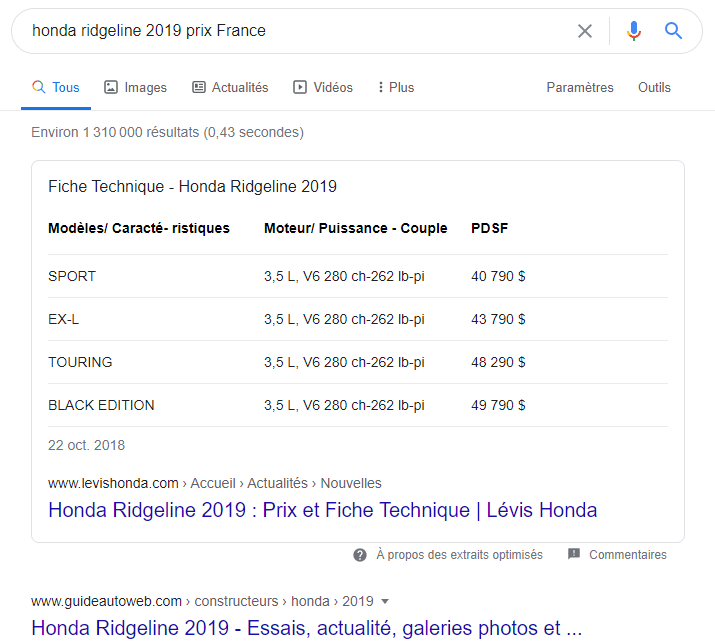
If you operate in an industry where prices are not fixed and vary very quickly, it is agreed that it would be complicated to make a pre-established list of the prices of your different products
The ideal in such a situation would be to propose an estimation table to help Internet users get an idea of the price range
This is a way to improve the user experience you offer on your site. You should put your users’ satisfaction first and constantly look for solutions to make their lives easier
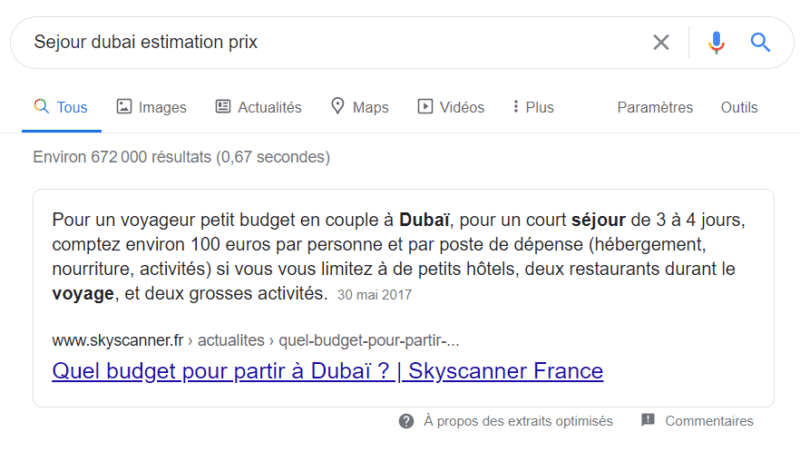
5.6. Content with Best of… Top… or Best of… lists
The terms that come up most often in the Zero Position results are the words :
- Top
- Best Of
- Best
Internet users always want the “best” in their searches: “Best International Business University”, “Top 10 best e-commerce sites”, “Best restaurant near me”, etc
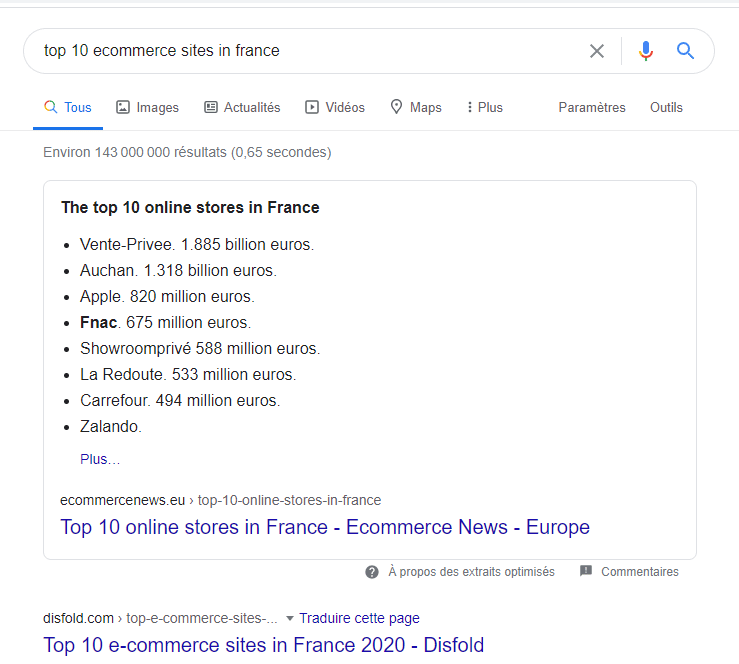
Have you ever written such lists in your field? If not, don’t just let your competitors suggest what is “best” for Internet users
Also, start creating lists of “best products” or “best services” in your area
Do your research well and back it up with statistics on how one product is better than another or how one service is more profitable than another
5.7. Content with frequently asked questions from customers
It is important to emphasize that these are not the same questions that are found on the FAQ. These questions usually contain information on a wide variety of topics
Here, what is recommended is the creation of content on common customer questions, but rich enough to build a topic that brings out the details and nuances of the topic
If you sell natural flowers, for example, you can write an article about which flower varieties to plant in the fall and be posted at Position Zero
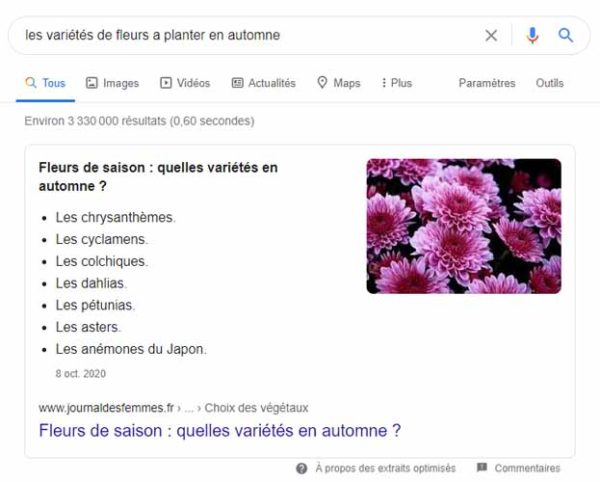
Generally, these types of content need to be updated regularly, so it’s helpful to add a “Last Updated” tag to allow Google and users to track the history of changes
Chapter 6: Other questions asked about the Zero Position
6.1. What does Zero Position mean in the SERPs?
Position Zero is the term used to describe Google’s featured snippet. Also known as featured snippets, P0 aims to answer users’ questions directly, without having to click on the link in search results. It is displayed at the top of the search page above the organic search results.
6.2. Why aim for the Zero Position?
Here are three (03) main reasons why you should aim for this position:
- It allows you to get more places on the SERPs;
- It allows you to be well ranked for voice searches;
- It increases the click-through rate (CTR) of the chosen website.
6.3. What to do to reach the Zero position?
- Always opt for an ordered list for your listings: Bulleted list, numbering… ;
- Avoid twists and turns and get straight to the point when creating your content;
- Create content specifically for the purpose of answering questions
- Provide in-depth answers;
- Know the questions your readers are asking;
- Create truly high quality content;
- Work to provide the best answer;
- Use question and answer pages;
- Fill the page with high quality images;
- Structure your content perfectly;
- Use powerful on-page SEO ;
- Don’t forget keyword research;
- Etc.
6.4. How many types of featured snippets are there?
There are four types of featured snippets
- Paragraphs
- Tables;
- Lists;
- And videos
Each can be useful in increasing the search volume on your website.
6.5. What is the difference between rich snippets and featured snippets?
Simply put, a rich snippet is an enhanced organic search result, while a featured snippet is an answer to a query that appears above the organic search results in position zero.
Conclusion
To sum up, Position Zero simply refers to that small isolated extract from organic searches that you find at the top of Google pages when you enter certain questions, especially conversational ones
It is a position very coveted by SEOs because it improves the SEO of selected pages
But it’s one thing to want it and it’s another to meet the necessary conditions to deserve it
I had the opportunity to show you a number of good practices to observe to deserve to occupy the Zero Position
And you, what is your strategy to occupy this rank? Share them with us in comments!
See you soon!

